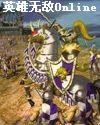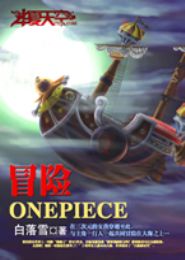beacon lights of history-iii-2-第58部分
按键盘上方向键 ← 或 → 可快速上下翻页,按键盘上的 Enter 键可回到本书目录页,按键盘上方向键 ↑ 可回到本页顶部!
————未阅读完?加入书签已便下次继续阅读!
Scripture; that opposition arises among scientific men。 It would
seem that the doctrines of Copernicus were offensive to churchmen
on this narrow ground。 It was hard to believe that the earth
revolved around the sun; when the opinions of the learned for two
thousand years were unanimous that the sun revolved around the
earth。 Had both theologian and scientist let the Bible alone;
there would not have been a bitter war between them。 But
scientists were accused by theologians of undermining the Bible;
and the theologians were accused of stupid obstinacy; and were
mercilessly exposed to ridicule。
That was the great error of Galileo。 He made fun and sport of the
theologians; as Samson did of the Philistines; and the Philistines
of Galileo's day cut off his locks and put out his eyes when the
Pope put him into their power;those Dominican inquisitors who
made a crusade against human thought。 If Galileo had shown more
tact and less arrogance; possibly those Dominican doctors might
have joined the chorus of universal praise; for they were learned
men; although devoted to a bad system; and incapable of seeing
truth when their old authorities were ridiculed and set at nought。
Galileo did not deny the Scriptures; but his spirit was mocking;
and he seemed to prejudiced people to undermine the truths which
were felt to be vital for the preservation of faith in the world。
And as some scientific truths seemed to be adverse to Scripture
declarations; the transition was easy to a denial of the
inspiration which was claimed by nearly all Christian sects; both
Catholic and Protestant。
The intolerance of the Church in every age has driven many
scientists into infidelity; for it cannot be doubted that the
tendency of scientific investigation has been to make scientific
men incredulous of divine inspiration; and hence to undermine their
faith in dogmas which good men have ever received; and which are
supported by evidence that is not merely probable but almost
certain。 And all now that seems wanting to harmonize science with
revelation is; on the one hand; the re…examination of the Scripture
texts on which are based the principia from which deductions are
made; and which we call theology; and; on the other hand; the
rejection of indefensible statements which are at war with both
science and consciousness; except in those matters which claim
special supernatural agency; which we can neither prove nor
disprove by reason; for supernaturalism claims to transcend the
realm of reason altogether in what relates to the government of
God;ways that no searching will ever enable us to find out with
our limited faculties and obscured understanding。 When the two
realms of reason and faith are kept distinct; and neither
encroaches on the other; then the discoveries and claims of science
will meet with but little opposition from theologians; and they
will be left to be sifted by men who alone are capable of the task。
Thus far science; outside of pure mathematics; is made up of
theories which are greatly modified by advancing knowledge; so that
they cannot claim in all respects to be eternally established; like
the laws of Kepler and the discoveries of Copernicus;the latter
of which were only true in the main fact that the earth revolves
around the sun。 But even he retained epicycles and excentrics; and
could not explain the unequal orbits of planetary motion。 In fact
he retained many of the errors of Hipparchus and Ptolemy。 Much;
too; as we are inclined to ridicule the astronomy of the ancients
because they made the earth the centre; we should remember that
they also resolved the orbits of the heavenly bodies into circular
motions; discovered the precession of the equinoxes; and knew also
the apparent motions of the planets and their periods。 They could
predict eclipses of the sun and moon; and knew that the orbit of
the sun and planets was through a belt in the heavens; of a few
degrees in width; which they called the Zodiac。 They did not know;
indeed; the difference between real and apparent motion; nor the
distance of the sun and stars; nor their relative size and weight;
nor the laws of motion; nor the principles of gravitation; nor the
nature of the Milky Way; nor the existence of nebulae; nor any of
the wonders which the telescope reveals; but in the severity of
their mathematical calculations they were quite equal to modern
astronomers。
If Copernicus revolutionized astronomy by proving the sun to be the
centre of motion to our planetary system; Galileo gave it an
immense impulse by his discoveries with the telescope。 These did
not require such marvellous mathematical powers as made Kepler and
Newton immortal;the equals of Ptolemy and Hipparchus in
mathematical demonstrationbut only accuracy and perseverance in
observations。 Doubtless he was a great mathematician; but his fame
rests on his observations and the deductions he made from them。
These were more easily comprehended; and had an objective value
which made him popular: and for these discoveries he was indebted
in a great measure to the labors of others;it was mechanical
invention applied to the advancement of science。 The utilization
of science was reserved to our times; and it is this utilization
which makes science such a handmaid to the enrichment of its
votaries; and holds it up to worship in our laboratories and
schools of technology and mines; not merely for itself; but also
for the substantial fruit it yields。
It was when Galileo was writing treatises on the Structure of the
Universe; on Local Motion; on Sound; on Continuous Quantity; on
Light; on Colors; on the Tides; on Dialing;subjects that also
interested Lord Bacon at the same period;and when he was giving
lectures on these subjects with immense eclat; frequently to one
thousand persons (scarcely less than what Abelard enjoyed when he
made fun of the more conservative schoolmen with whom he was
brought in contact); that he heard; while on a visit to Venice;
that a Dutch spectacle…maker had invented an instrument which was
said to represent distant objects nearer than they usually
appeared。 This was in 1609; when he; at the age of fifty…five; was
the idol of scientific men; and was in the enjoyment of an ample
revenue; giving only sixty half…hours in the year to lectures; and
allowed time to prosecute his studies in that 〃sweet solitariness〃
which all true scholars prize; and without which few great
attainments are made。 The rumor of the invention excited in his
mind the intensest interest。 He sought for the explanation of the
fact in the doctrine of refraction。 He meditated day and night。
At last he himself constructed an instrument;a leaden organ pipe
with two spectacle glasses; both plain on one side; while one of
them had its opposite side convex; and the other its second side
concave。
This crude little instrument; which magnified but three times; he
carries in triumph back to Venice。 It is regarded as a scientific
toy; yet everybody wishes to see an instrument by which the human
eye indefinitely multiplies its power。 The Doge is delighted; and
the Senate is anxious to secure so great a curiosity。 He makes a
present of it to the Senate; after he has spent a month in showing
it round to the principal people of that wealthy city; and he is
rewarded for his ingenuity with an increase of his salary; at
Padua; to one thousand florins; and is made professor for life。
He now only thinks of making discoveries in the heavens; but his
instrument is too small。 He makes another and larger telescope;
which magnifies eight times; and then another which magnifies
thirty times; and points it to the moon。 And how indescribable his
satisfaction; for he sees what no mortal had ever before seen;
ranges of mountains; deep hollows; and various inequalities! These
discoveries; it would seem; are not favorably received by the
Aristotelians; however; he continues his labors; and points his
telescope to the planets and fixed stars;but the magnitude of the
latter remain the same; while the planets appear with disks like
the moon。 Then he directs his observations to the Pleiades; and
counts forty stars in the cluster; when only six were visible to
the naked eye; in the Milky Way he descries crowds of minute stars。
Having now reached the limit of discovery with his present
instrument; he makes another of still greater power; and points it
to the planet Jupiter。 On the 7th of January; 1610; he observes
three little stars near the body of the planet; all in a straight
line and parallel to the ecliptic; two on the east and one on the
west of Jupiter。 On the next observation he finds that they have
changed places; and are all on the west of Jupiter; and the next
time he observes them they have changed again。 He also discovers
that there are four of these little stars revolving round the
planet。 What is the explanation of this singular phenomenon? They
cannot be fixed stars; or planets; they must then be moons。
Jupiter is attended with satellites like the earth; but has four
instead of one! The importance of this last discovery was of
supreme value; for it confirmed the heliocentric theory。 Old
Kepler is filled with agitations of joy; all the friends of Galileo
extol his genius; his fame spreads far and near; he is regarded as
the ablest scientific man in Europe。
His enemies are now dismayed and perplexed。 The principal
professor of philosophy at Padua would not even look through the
wonderful instrument。 Sissi of Florence ridicules the discovery。
〃As;〃 said he; 〃there are only seven apertures of the head;two
eyes; two ears; two nostrils; and one mouth;and as there are only
seven days in the week and seven metals; how can there be seven
planets?〃
But science; discarded by the schools; fortunately finds a refuge
among princes。 Cosimo de' Medici pref






